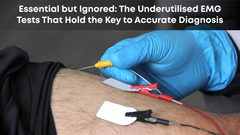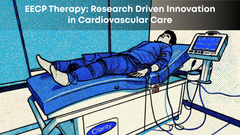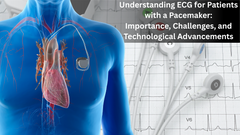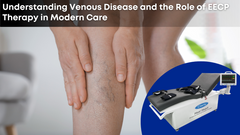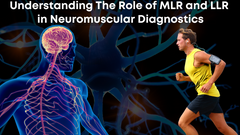Carpal Tunnel Syndrome: Rising Incidents During The COVID-19 Pandemic
It is the year 2022, and the COVID-19 induced pandemic is far from over. Scientists worldwide continue to detect newer mutations (variants) of the virus and develop vaccines to try and reduce the impact of the virus on our lives. However, the pandemic has completely transformed how we lived, worked and led our lives. Offices are (in some cases) permanently shut, working and studying from home is the new norm. Long hours of work and time spent binge-watching TV or content online has also given rise to disorders that were earlier only heard of in isolated cases. Names such as Carpal Tunnel Syndrome, Dry Eye Syndrome, Repetitive Stress Injuries, Cervical Spondylitis and sleep disorders are now commonplace, affecting nearly 30% of those working from home for the first time.
Is COVID-19 causing these problems?
In some ways, yes. COVID-19 might not be causing carpal tunnel syndrome, cervical spondylitis, dry eye syndrome and other such disorders for sure, but our newfound habits are. When the pandemic-induced lockdown struck, not many of us were prepared to work from home. In fact, most companies worldwide frowned upon the idea of working online and students were discouraged from joining online study programs. All of this changed suddenly when the pandemic began. Offices were shuttered, schools shut, and work/study from home became the new normal.
Why are these problems so significant?
With over 80% of staff in IT companies and other service industries working from home and students studying online, most of these individuals paid little or no notice to the fact that they did not have the right equipment that was purpose-built for long hours of use. Chairs, tables, computer monitors and other equipment we have at home are built for limited and not full-time use. Working and studying from home often stretches our workday by a few hours, increasing the strain on our eyes, hands, and neck, giving rise to aches, pains, tingling sensations and dry eyes. Most students and those working from home suffer from Carpal Tunnel Syndrome.
What is carpal tunnel syndrome?
Carpal tunnel syndrome occurs when the median nerve located on the palm of your hand is compressed. This nerve provides you with the ability to feel your thumb, index finger, long finger and ring finger. When your wrist swells due to undue pressure caused by unergonomic keyboards and tabletops, it leads to weakness, numbness and tingling on the side of your hand.
Recommended Post: Post COVID-19 - Emerging Trends Bound To Revolutionize Medical Care
Is ergonomics the only reason for carpal tunnel syndrome?
No. Although ergonomics is the primary causal factor for Carpal tunnel syndrome, many other factors can cause this problem to occur. These include:
- • Hypertension (high blood pressure)
- • Diabetes
- • Arthritis
- • Fracture of the wrist or wrist trauma
- • Thyroid dysfunction
Additionally, mechanical factors such as prolonged exposure to vibrations, repetitive stress such as playing the piano or typing, and ergonomics are also significant factors that can cause this problem to occur.
What are the main symptoms of carpal tunnel syndrome?
Most people report a loss of sensation in their hands as the first tell-tale sign of carpal tunnel syndrome. Other symptoms can include:
- • Numbness
- • Tingling
- • Pain and burning sensation
- • Wrist pain that interferes with sleep
- • Weakness in the hand muscles
How is carpal tunnel syndrome diagnosed?
Carpal tunnel syndrome can easily be diagnosed by a doctor using a nerve conduction study or a physical examination. They take a history of your symptoms, a physical exam, an X-ray of your wrist and use an EMG device to perform a nerve conduction study.
What is a nerve conduction study?
A nerve conduction study is a non-invasive test that uses a device called an electromyograph or an EMG machine. This machine records the electrical activity produced by your skeletal muscles. EMG machines record Eps or evoked potentials—which are the electrical signals produced by your nervous system. This is a non-invasive and painless test and an outpatient procedure you can undergo in minutes.
Doctors use devices such as EasyTrace portable EMG Machines to conduct nerve conduction studies. Coupled with the EasyStim stimulation device, EasyTrace quickly gathers all the parameters needed for the nerve conduction study including MNS, SNC, F-Wave, H-Reflex, Blink Reflex and RNS to provide doctors with all the information they need to give you the best possible treatment.
How do doctors treat carpal tunnel syndrome?
After a carpal tunnel nerve conduction test using a device such as EasyTrace EMG Machine, your doctor will help you to alleviate these problems using one of the following methods:
- • Avoiding positions that overextend your wrist
- • Wearing a splint while going to bed
- • Using better and more ergonomic keyboards and workstations
- • Treating underlying diseases, if any (thyroid, arthritis)
- • Using steroid injections to reduce inflammation if the pain is acute
- • Using supportive methods such as wrist supports.
You may need to undergo surgery in extreme conditions or in case there is significant damage to your median nerve. Doctors cut some tissue that puts pressure on your nerve during this surgery. However, this is really rare and only done in exceptional and extreme cases. Most problems faced due to Carpal tunnel syndrome are fixed by supportive therapy.
Can I prevent carpal tunnel syndrome?
Absolutely. Preventing Carpal tunnel syndrome only requires lifestyle changes and physical therapy to reduce the onset of this problem. Using an ergonomic keyboard, reducing devices such as pianos and vibrating equipment for long hours and using supportive splints at night can easily prevent this problem from recurring or showing up in the first place.
Here are some simple ways to prevent carpal tunnel syndrome:
- • Take a break—it helps more than you think. If you use the keyboard or drills, stretch your arms and wrists and do something else every 15-30 minutes.
- • Maintain neutral wrist flexion –avoid flexing your wrists to extreme positions. Keep the position as neutral as possible.
- • Keep your hands and wrists warm. This reduces inflammation, pain and stiffness.
- • Do wrist exercises at least 3-4 times a day or when you have time.
Final Thoughts
Carpal tunnel syndrome is often ignored but a debilitating and painful experience. It is best to seek advice from your doctor before you try any OTC cures. This will also prevent nerve damage and help you fix it before it gets aggravated and needs aggressive treatment regimens. Stay safe, take care and contact your doctor if you believe that you’re suffering from carpal tunnel syndrome.
About Clarity Medical
Clarity Medical is an innovative, world-class medical device manufacturer from India. Clarity’s products are extremely reliable and purpose-built to ensure high standards of patient care. Clarity Medical’s EMG machines, SpO2 monitors, critical care monitoring devices and telemetry solutions are being used in dozens of countries worldwide. All of Clarity Medical’s devices provide high accuracy, reliability and efficiency to ensure the best quality patient care at all times. They use high-end simulators to replicate hospitals scenarios that ensure that their device can effectively handle nearly every noise-inducing facet before it is placed in the hands of physicians and hospitals staff. This leads to accurate values under all conditions, even in extreme situations. Clarity Medical possesses advanced in-house research and development capability to design and manufacture complex hardware and next-generation IoT healthcare systems.






